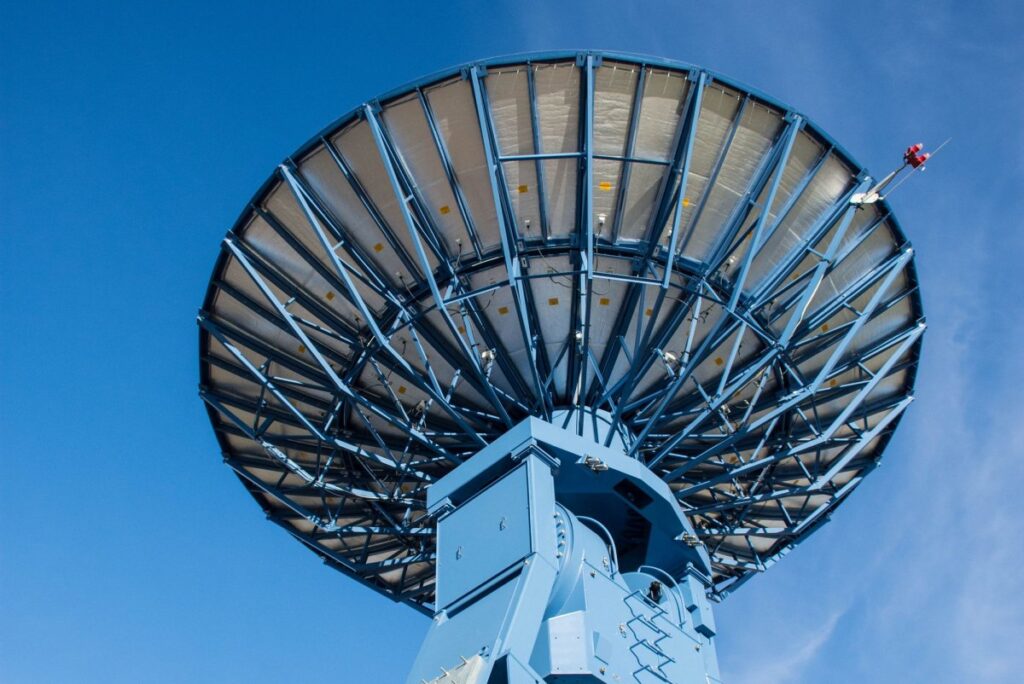
A Near Space Network antenna scans the skies at the Alaska Satellite Facility in Fairbanks, Alaska.
Photo courtesy of NASA
Dec. 23 (UPI) — Space missions to the moon, Mars and beyond often get the most attention, but NASA’s Near Space Network does a lot of heavy lifting for humankind’s reach for the stars.
NASA announced on Monday that it has chosen multiple companies to expand what it calls NSN’s commercial “direct-to-Earth capabilities services,” which allow spacecraft to transmit data directly to ground stations on Earth.
It’s a system used by the International Space Station, the Hubble Space Telescope and many Earth-observing missions, especially ones focused on climate and weather topics. It also is envisioned by NASA as being a major supporter of its long-range Artemis program.
The NSN system supports missions within one million miles of Earth with what the agency calls “robust communications” services. It’s comprised of global ground stations and NASA’s Tracking Data and Relay Satellite system in geosynchronous orbit. The system is serviced by government agencies and commercial companies, and it supports an array of science missions both manned and unmanned.
In the announcement on Monday, NASA said the new work contracts being awarded are “firm-fixed-price, indefinite-delivery/indefinite-quantity contracts.” The project timelines span from February 2025 to September 2029.
The awarded contracts went to:
- Intuitive Machines of Houston will receive two task order awards to support NASA’s Lunar Exploration Ground Segment, providing additional capacity to alleviate demand on the Deep Space Network and to meet the mission requirements for unique, highly elliptical orbits.
- Kongsberg Satellite Services of Tromsø, Norway, will receive two task order awards on its contract to support science missions in low Earth orbit and NASA’s Lunar Exploration Ground Segment, providing additional capacity to alleviate demand on the Deep Space Network.
- SSC Space U.S. Inc. of Horsham, Penn., will receive contract awards to support science missions in low Earth orbit and to meet the mission requirements for unique, highly elliptical orbits.
- Viasat, Inc. of Duluth, Ga., will be awarded a task order on its contract to support science missions in low Earth orbit.
In October, NASA announced that it was transitioning to commercial systems to support its future near-Earth space missions while continuing use an existing Tracking and Data Relay Satellite system for existing missions.
At the time, the agency said advancements in commercial satellite capabilities have enabled NASA officials to make the transition, saying “tremendous advancements in commercial innovation” have paved the way for the change.








